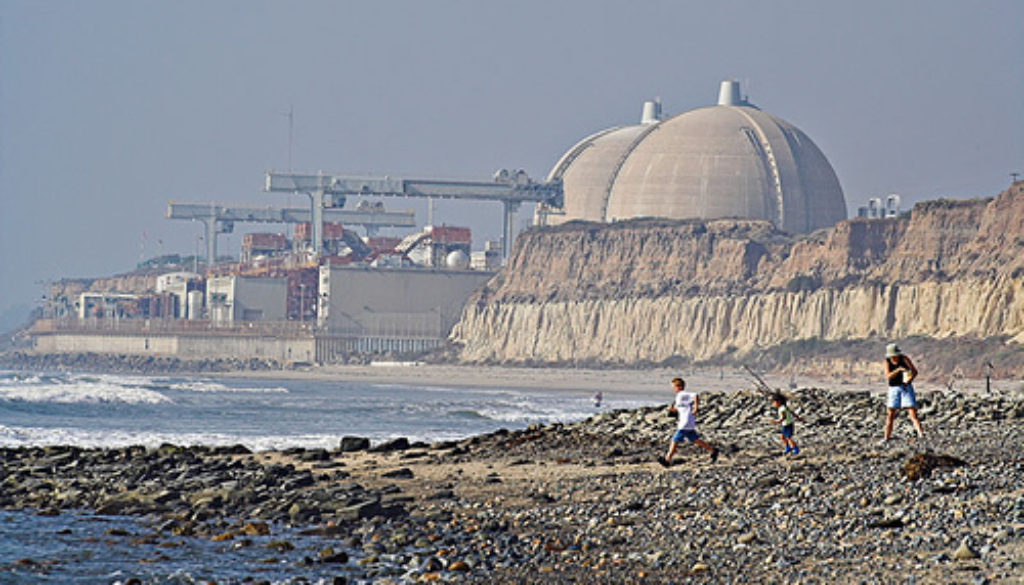Regulating Tritium Leaks and Spills
By , Natural Resources Defense Council
Tritium is a radioactive isotope of hydrogen. It is continuously released to the environment from both natural and human sources. The major natural source of tritium is the result of several interactions of cosmic rays with gases in the upper atmosphere, existing principally in the form of water vapor which precipitates as rain and snow. Human sources of tritium are due to the manufacture and testing of nuclear weapons, as well as the operation of nuclear power reactors.
Health effects of tritium
The radioactive half-life of tritium (indicating the rate at which the nucleus disintegrates) is 12.3 years. Thus tritium is classified as a long half-life radionuclide. However, because of the low energy of the radiation given off by the beta-decay of tritium, and subsequently this radiation’s low ability to penetrate materials, tritium’s decay radiation can be completely absorbed by sheets of plastic, paper, glass or metal, and tritium’s decay radiation cannot penetrate the top-most, dead layer of skin in humans or animals. Nevertheless, tritium exposure can pose a health risk if it is ingested in drinking water or food, or inhaled or absorbed by the skin or by other biological tissue. This means that exposure to tritium through internal uptake primarily needs to be considered in assessing any effect on biological systems, including human health. Once tritium enters the body, it disperses quickly and is uniformly distributed throughout the soft tissues. Half of the tritium entering the human body through ingestion is excreted within approximately 10 days after exposure.
Radiation protection limits for tritium exposure
The U.S. Environmental Protection Agency (EPA) has established a Maximum Contaminant Level (MCL) of 4 millirem per year for beta particle and photon radioactivity from man-made radionuclides in drinking water. The average concentration of tritium which is calculated to produce an exposure of 4 millirem per year is 20,000 picocuries (pCi/l). If other radionuclides which emit beta particles and photon radioactivity are present in addition to tritium, the sum of the annual dose from all the radionuclides, including tritium, must not exceed 4 millirem/year according to EPA regulations.
Tritium production and release from nuclear reactors in the United States
There are 65 locations in the United States where commercial nuclear power plants are or have been recently operating. This operation produces tritium as a byproduct. The annual production of fission-product tritium by a 1,000 megawatt electrical (MWe) light-water reactor is in the range of 15,000 to 25,000 Ci.
Nuclear power plants routinely release dilute concentrations of tritiated water. If the tritium releases occur within the boundaries of the nuclear power plant, the tritium releases are regulated by U.S. Nuclear Regulatory Commission (NRC). If the tritium release occurs outside the boundaries of the nuclear power plant, the tritium releases are regulated by the EPA.
The NRC requires nuclear power plant owners to report the amount of tritium discharged. There have been multiple cases where tritium leaks or spills have been reported by the nuclear power plant operator to the NRC. NRC records indicate 46 sites in the United States have had leaks or spills that involved tritium in excess of 20,000 pCi/L. The figure below shows the locations. The record also indicates that no site is currently detecting tritium in the offsite environment, or in drinking water, in excess of 20,000 pCi/L.
While these leaks do not exceed the EPA limits this does not mean that we need to tolerate these releases. To adequately protect public health and safety, NRC must enforce aggressively its regulatory requirements to monitor, control and limit tritium releases from nuclear power plants.

